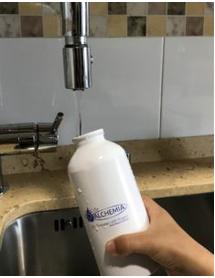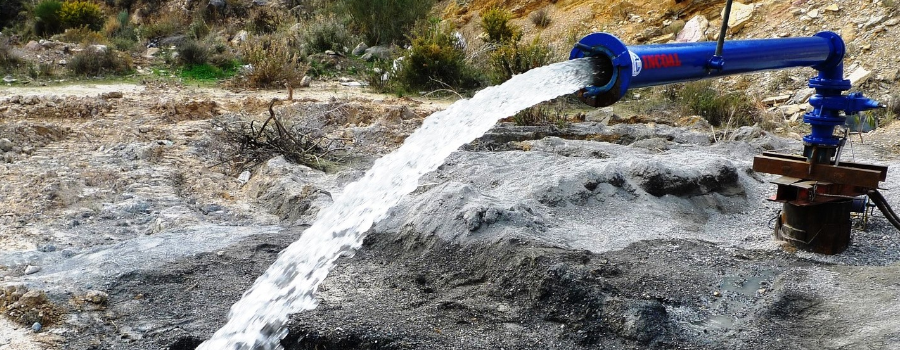In our daily life, we are surrounded by radioactivity, from natural or artificial origin. Most of the radioactivity in the environment results from natural elements. In fact, there are radioactive elements in many foods and drinking water. But… How do these elements reach drinking water?

The radionuclides or radioactive isotopes are naturally present in the rocks of the earth’s crust, being the uranium mines a good example of this phenomenon. The content of these natural radionuclides varies between different rocks and soil types, with granite formations being one of the ones with the highest radionuclide content. When groundwater is in contact with these subsoils, it progressively degrades the rocks, dissolving and dragging radionuclides that can be integrated in his chemical composition in concentrations that exceed the standards required by Council Directive 2013/51/Euratom of 22 October 2013. The radionuclides that may be present in drinking water are mainly radon (222Rn), uranium (238U, 234U) and radium (226Ra), among others.
In Spain, the control of radioactive substances in water for human consumption is established according to Royal Decree 140/2003, which indicates the radioactivity parameters to be measured and the maximum values allowed. This RD quotes “all the data generated from the controls of radioactive substances in drinking water or water for the water production for human consumption must be notified in the National Information System on Drinking Water (SINAC)”.

But, do citizens really have access to information about the radiological quality of drinking water? During the development of one of the transversal activities of the LIFE ALCHEMIA project, it has been concluded that, really, the answer varies greatly depending on the country. This European project, co-financed by the LIFE Programme of the European Union, aims to demonstrate the feasibility of environmentally sustainable systems based on oxidations with manganese dioxide and bed filters to removal/reduce the natural radioactivity in water, and minimize the generation of Naturally Occurring Radioactive Materials (NORM) in the purification stages.
The LIFE ALCHEMIA project is developing databases that show the levels of natural radioactivity in treated water in drinking water treatment plants throughout the European Union, and it has been observed that in countries such as France or Estonia, citizens have free access to this information, while in countries like Finland or Sweden this information is not public or is not easily accessible. Spain is within this second group. In fact, looking at the SINAC (National Information System on Drinking Water), it is verified that the information on the radiological quality of water, is not accessible to the citizen.
Therefore, hundreds of water managers and City Councils have been contacted to request information, but only a few have responded to this request. This situation is more worrying when the high levels of uranium and thorium present in the subsoil of provinces such as Almería (province where LIFE ALCHEMIA is operating three pilot plants), Pontevedra, Ourense, Salamanca, Cáceres or Badajoz are verified.
This lack of transparency may be due to the fact that the concept of radioactivity does not have a good reputation due to the different catastrophes associated with it, so it is thought that radioactivity is indicative of “death”, even though these catastrophes have no relation to natural radioactivity.
As a final reflexion, three questions:
- Did I know that water from my tap may contain natural radioactivity?
- Do I know the radiological characteristics of water I drink daily?
- And if I want to know them, do I know where I have to go and can I really get that data?
If you try to answer these three questions, you can draw your own conclusions about how this environmental problem is addressed in your locality.
Marta Gómez and Nicolás Martín
- Is there natural radioactivity in drinking water? - 16 April 2019
- Living between dioxins and furans - 18 November 2016
